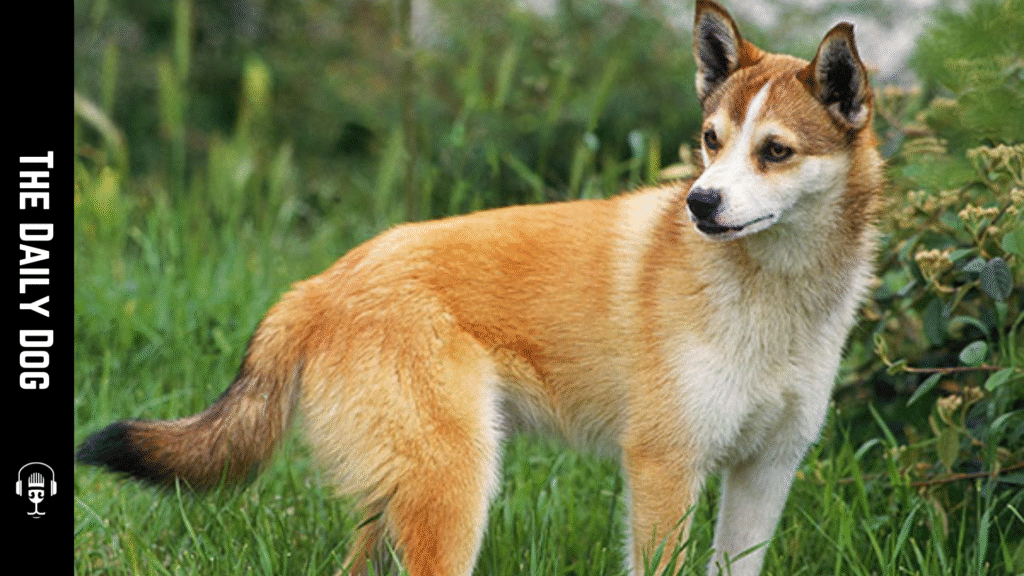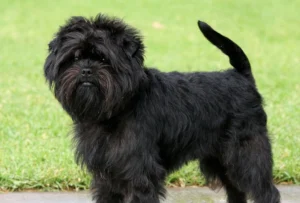If you’re drawn to bright, spirited dogs who love to work, learn, and live as part of an active household, the Norwegian Buhund deserves a place on your shortlist. This medium-sized Spitz-type herding dog from Norway blends a cheerful temperament with sharp intelligence and an impressive work ethic. With prick ears, a curled tail, and expressive eyes, the Buhund is both striking and substantial—a confident, athletic partner equally at home on a hiking trail or a suburban sidewalk. Below is what prospective owners should know about Norwegian Buhund temperament, grooming, training, health, and daily life, written to help you decide whether this breed’s energy and enthusiasm match your lifestyle.
History and Heritage: A Viking’s Versatile Farm Dog
The Norwegian Buhund’s story stretches back more than a thousand years. Archeological finds at Viking burial sites in Norway have included the remains of dogs with Buhund-like features, a testament to the breed’s long-standing partnership with people. Historically, Buhunds worked on farms in rugged Scandinavian landscapes. They herded sheep and cattle, kept watch around homesteads, and alerted families to strangers and wildlife—making them both reliable farmhands and vigilant watchdogs.
“Bu” refers to farm or homestead in Norwegian, and “hund” means dog. True to their name, Buhunds became indispensable to rural life for their agility, endurance, and quick learning. Today they are recognized by major kennel clubs, including the American Kennel Club (AKC) in the Herding Group, and they continue to shine in herding, agility, rally, obedience, and search-and-rescue training.
Breed Overview: Size, Coat, and Colors
The Norwegian Buhund is a compact, athletic dog with the classic Spitz silhouette: wedge-shaped head, upright triangular ears, a dense double coat, and a tightly curled tail carried over the back. Males typically stand about 17 to 18.5 inches at the shoulder and weigh roughly 31 to 40 pounds, while females average 16 to 17.5 inches and 26 to 35 pounds. This is a well-balanced, medium-build dog designed for stamina rather than bulk.
The double coat comes in two primary colors: wheaten (ranging from very pale cream to warm orange-wheaten) and black. Minimal white markings may appear on the chest or toes. The coat’s weather resistance suits Norway’s harsh climate, which also explains why this breed thrives in cooler environments and needs careful management in heat.
Norwegian Buhund Temperament: Cheerful, Alert, and People-Focused
A Norwegian Buhund is often described as a happy worker. These dogs are playful and affectionate with their families, eager to engage in training games and outdoor adventures. They are generally excellent with respectful children and can be a good family dog for those who appreciate structure and activity. With strangers, a Buhund may be reserved at first but typically warms up with proper introductions. Their watchdog instincts are strong, so expect a keen awareness of their surroundings and a ready bark when something seems out of place.
As a herding dog, the Buhund pairs high intelligence with strong opinions. They are quick to learn patterns and equally quick to invent their own if you’re not consistent. Mental stimulation—puzzle feeders, scent games, trick training—matters as much as physical exercise. Without enough work for the brain and body, a Buhund may resort to nuisance behaviors like excessive barking, digging, or herding household members and pets.
Exercise Needs: Daily Work for a Working Mind
Plan on 60 to 90 minutes of exercise per day, ideally split between brisk walks, off-leash romps in secure areas, and focused activities that challenge the mind. Many owners find agility, herding trials, tracking, rally, and obedience to be natural outlets for the breed’s talents. Nose work is particularly satisfying because it channels scenting instincts into a calm, tiring task.
Apartment living is possible for a Norwegian Buhund if you meet their exercise needs and address their voice. Because they are naturally vocal, they can easily become the neighborhood town crier without training. Teaching a “quiet” cue, providing chew items and enrichment while you’re away, and ensuring a robust exercise routine go a long way toward maintaining peace with close neighbors.
Training a Norwegian Buhund: Positive, Consistent, and Fun
The Norwegian Buhund is highly trainable when you use positive reinforcement. Clicker training, food rewards, and play build motivation and confidence, while harsh corrections can create pushback or dampen their enthusiasm. Start early with socialization—exposing your puppy to varied people, places, surfaces, and sounds—so that alertness never hardens into suspicion.
Focus first on recall, loose-leash walking, and impulse control. Buhunds are busy, curious dogs; teaching “leave it,” “settle,” and “place” provides valuable off-switches. Because they are naturally talkative, build “speak” and “quiet” cues into your training plan. Many Buhunds excel in advanced obedience and thrive on being given a job, whether that’s bringing you the mail from the hallway or running a short agility sequence in the backyard. Consistency, short sessions, and variety keep training effective and enjoyable.
Living With Other Pets and Children
Most Norwegian Buhunds are friendly with other dogs when properly socialized. Their herding heritage may express as gentle nips or circling, which should be redirected. They can coexist well with cats, though some individuals may try to herd them; introduce slowly and provide vertical escape routes for feline roommates. Around children, the Buhund typically shows patience and playfulness, but like any breed, interactions should be supervised and children taught to respect the dog’s space, toys, and meals.
Grooming and Shedding: The Reality of a Double Coat
Norwegian Buhund grooming is straightforward but regular. Expect weekly brushing for most of the year and more frequent brushing during seasonal shedding (often twice a year) when the soft undercoat “blows” in dramatic tufts. A slicker brush and undercoat rake will be your go-to tools. Regular nail trims, ear checks, and dental care are essential, and bathing is typically needed only every few months unless your dog finds a mud puddle.
Norwegian Buhund shedding is moderate to heavy during coat-blow season. This breed is not hypoallergenic. If dander sensitivity is an issue in your home, plan to manage shedding with consistent grooming, vacuuming, and an air purifier to keep allergens lower.
Health and Longevity: What to Expect
The Norwegian Buhund is generally a healthy breed with a life expectancy of about 12 to 15 years. Responsible breeders screen for conditions seen in the breed and share health clearances with puppy buyers. Potential health issues can include hip dysplasia, elbow dysplasia in some lines, patellar luxation, and inherited eye conditions such as cataracts and progressive retinal atrophy (PRA). Skin allergies and ear infections may occur, especially if the coat and ears are not groomed consistently. As with many bright, athletic breeds, boredom and under-exercise can lead to stress behaviors, so meeting activity needs is part of overall wellness.
Ask breeders for Orthopedic Foundation for Animals (OFA) hip and, ideally, elbow evaluations, along with a current eye exam by a board-certified veterinary ophthalmologist (CAER). Genetic testing panels are evolving; a reputable breeder stays current with recommendations from the national breed club. Routine veterinary care, regular dental cleanings, parasite prevention, and maintaining a healthy weight are the cornerstones of long-term health.
Feeding and Nutrition: Fueling an Athlete
An adult Norwegian Buhund typically does well on a high-quality, complete-and-balanced diet formulated for the dog’s life stage and activity level. Split daily food into two measured meals to reduce the risk of bloat and to keep energy steady. Active individuals or dogs involved in performance sports may require calorie adjustments; monitor body condition with a hands-on rib check and a visible waistline rather than relying solely on the scale. Use measured treats from the daily ration during training to prevent overfeeding.
Climate and Lifestyle Considerations
Buhunds were bred for cool climates and a life on the move. They tolerate cold weather well when gradually acclimated, but in hot, humid conditions they can overheat quickly. Schedule exercise during cooler morning and evening hours in summer, provide shade and ample water, and consider cooling vests or mats. Because they form close bonds with their families, they may struggle with long hours alone; crate training, rotating enrichment toys, and midday breaks can help prevent separation-related stress.
Is the Norwegian Buhund a Good Family Dog?
For active families who enjoy the outdoors and appreciate training as a lifestyle, the Norwegian Buhund can be a superb companion. They are affectionate, comical, and eager to participate in family activities—from trail runs to backyard games with the kids. They thrive on structure, clear boundaries, and consistent mental and physical outlets. If you prefer a low-energy couch buddy or you live in a sound-sensitive building with limited time for exercise, this breed’s voice and vigor may be challenging. But for those who match their pace, a Buhund offers years of partnership and fun.
Norwegian Buhund Puppy vs. Adult: What to Expect
A Norwegian Buhund puppy is a whirlwind of curiosity. Early socialization classes, house training, and exposure to different environments set the stage for a confident adult. Puppy chewing requires management with durable toys and frequent redirection. Short, positive training sessions build focus; avoid repetitive high-impact exercise while growth plates are developing.
Adult Buhunds settle into a predictable rhythm once well trained, especially if they have outlets for their energy. Many adults make excellent running partners, agility teammates, or scent-work enthusiasts. Seniors remain mentally sharp; low-impact activities, joint support as recommended by your vet, and puzzle games help keep them comfortable and engaged.
Finding a Norwegian Buhund: Breeders and Rescue
Because the Norwegian Buhund is a relatively uncommon breed, expect to join a waitlist for a well-bred puppy. Seek breeders who prioritize health testing, temperament, and early socialization. Meet at least one parent, ask to see OFA and eye clearances, and be prepared for questions about your lifestyle—responsible breeders aim to place each puppy in the right home. Prices vary by region and pedigree, but a typical range in North America is often around $1,500 to $3,000 for a companion puppy, reflecting health screenings and quality care.
Rescue is also a meaningful option. Breed clubs often maintain rescue networks that rehabilitate and rehome adults, which can be a great fit for those who prefer to skip the puppy phase. An adult rescue Buhund often comes with some training and may settle faster into your routine.
Daily Life With a Buhund: Practical Tips
Start routines on day one. Structure helps a bright dog relax. Crate training supports house training and safe downtime. Rotate enrichment: frozen stuffed Kongs, snuffle mats, scent trails, and short trick sessions. Teach a reliable recall and a cue that means “go relax,” such as sending your dog to a bed or mat during family meals or when guests arrive. Invest in a secure fence or long line for practice, and supervise outdoor time; the breed’s curiosity and prey interest can lead to adventures.
Channel their voice. A Buhund will tell you about the mail carrier, the squirrel, and the leaf that moved. Reinforce quiet behavior, redirect to tasks, and avoid unintentionally rewarding barking by giving attention while they vocalize. Barking can be managed; it simply requires clarity and consistency.
Why the Norwegian Buhund Stands Out
Few breeds pack as much joy, intelligence, and athleticism into such a manageable size. The Norwegian Buhund is versatile, hardy, and deeply human-oriented, bringing upbeat energy to nearly everything you do together. Whether you’re exploring forest trails, practicing weave poles, or calmly sharing a coffee on the patio after a good training session, a Buhund is a partner that wants to be part of the action.
If you’re ready to invest time in training, embrace the soundtrack of a talkative herding dog, and commit to daily exercise and mental work, the Norwegian Buhund rewards you with loyalty, laughter, and a remarkable bond forged through shared activity. In a world full of breeds built for specific jobs, this Viking-era farm dog still excels at the most important one: being an engaged, enthusiastic member of your team.










